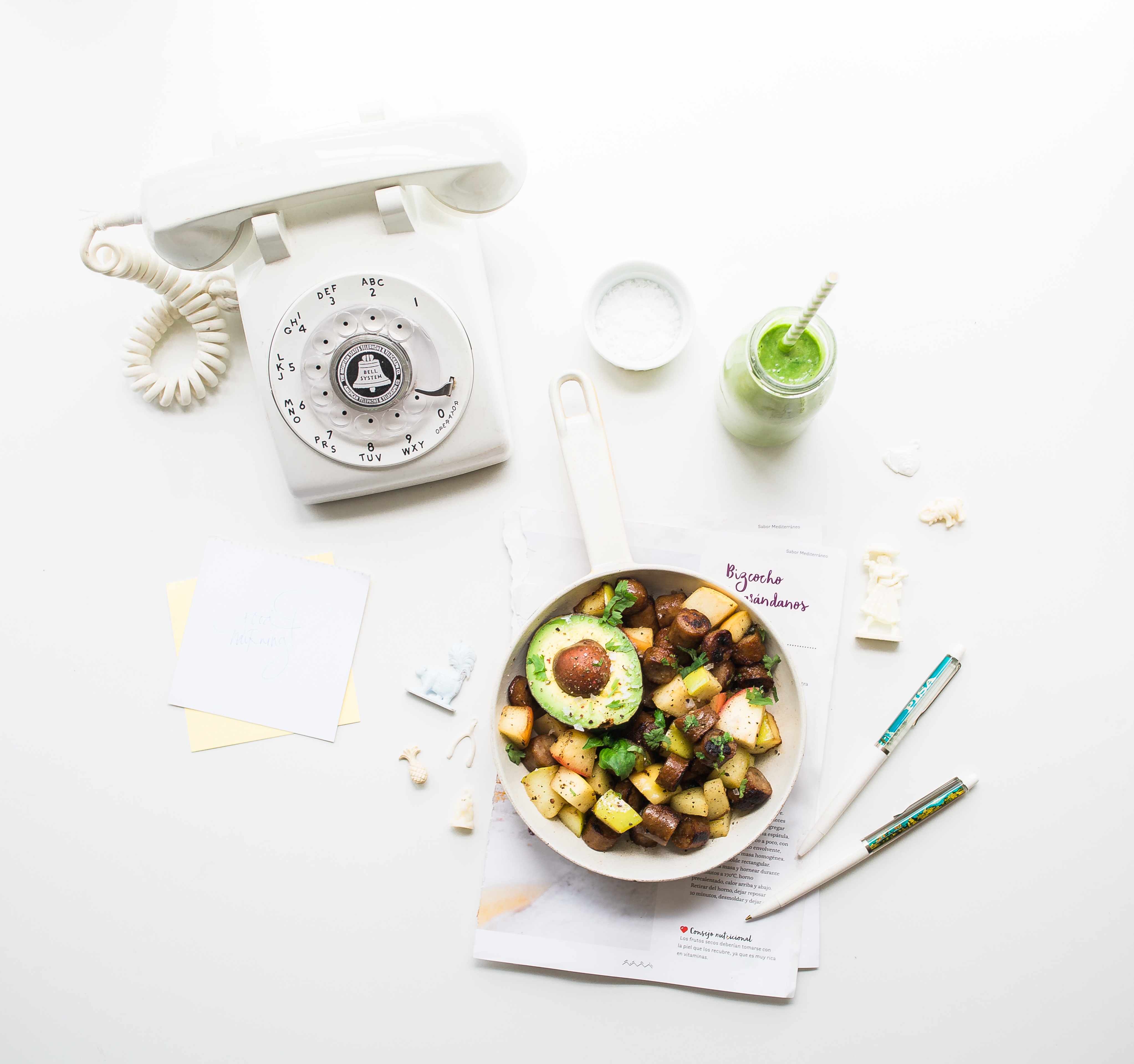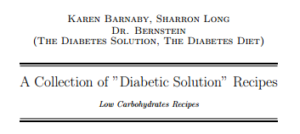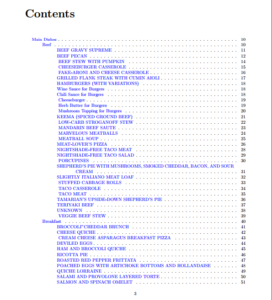This section is for everyone.
Overview
Looking at Ingredients: Carbohydrate
Foods to Eat Regularly
Eat in Moderation
Eat Sparingly
What Fats Should I Use?
What Protein Should I Use?
How do I successfully substitute ingredients?
Sugar Conversions
Recipe Books
Internet Sites
Overview
There are two ways of cooking and baking the low carb way.
By far the easiest way is simply to use ingredients that are naturally low in total carbohydrate and in glycaemic index and cook the way you usually do. For example many meat, fish, poultry and egg dishes can be made just the same as usual and served with plenty of low starch vegetables and butter or olive oil instead of rice, pastry, pasta, bread or potatoes.
The more tricky way is to substitute lower carb ingredients for the higher glycaemic, high carb items such as sugar, flour, potatoes, rice and bread. This tends to be a lot more expensive and there is often some compromise regarding the texture and flavour of these dishes.
Learning how to cook and bake low carb well is a pleasure not only for the cook but for those who get to eat the end result. You need not give up old favourites entirely. You simply enjoy them in a different way.
Before my son was diagnosed with type one diabetes I often bought entire meals from the cook chill cabinets at the supermarket. My son loves cakes and desserts and to maintain excellence in blood sugar control without an apparent restriction in these food items I now make time to have a regular cooking and baking slot about twice a week.
LOOKING AT INGREDIENTS: CARBOHYDRATE
What carbs raise your blood sugar very little and what ones raise it rapidly and a lot?
I have listed some of the commoner ingredients which Dr Atkins has listed according to how generous or restricted you should be with them.
FOODS TO EAT REGULARLY
Asparagus, green beans, bok choy, broccoli, brussels sprouts, butter beans, cabbage, cauliflower, celery, chard, collards, cucumber, aubergine, fennel, lettuce, mushrooms, okra, onion, mangetout, snow peas, peppers, radishes, rutabaga, saukerkraut, spinach, sprouts, courgettes, tomato, water chestnuts.
Cottage cheese,ricotta.
Almonds, brazil nuts, coconut, hazelnuts, macadamias, pecans, pine nuts, pistachios, pumpkin seeds, sesame seeds, sunflower seeds, walnuts.
Chickpeas, hummus, kidney beans, lentils, lentil soup, minestrone soup, peas dried or split, soybeans, unsweetened soy milk, tofu.
Apple, blackberries, blueberries, cherries, cranberries, grapefruit, unsweetened grapefruit juice, oranges, peach, pear, plum, raspberries, strawberries, tangerine.
All bran, cooked barley, low carb bread and muffins, low carb pasta, old fashioned oatmeal, wheat bran.
EAT IN MODERATION (ie infrequently or in small portions)
Carrots, green peas, mashed pumpkin, buttenut squash, tomato juice, tomato soup.
Whole milk, unsweetened yoghurt.
Cashew nuts, peanuts.
Black eyed beans.
Apricots, grapes, kiwifruit, mango, melon, papaya, pineapple.
Bran flakes, 100% wholegrain bread, pumpernickel bread, rye bread, sourdough, buckwheat, bulgur, whole wheat couscous, egg fettucine, melba toast, no sugar added muesli, pasta, popcorn, raisin bran, brown rice, taco shell.
EAT VERY SPARINGLY (these are the “bad guys”)
Sweet corn, parsnips, pea soup, potato
Full fat ice cream with sugar
Baked beans
Apple juice, bananas, cranberry juice, tinned fruit cocktail, grape juice, orange juice, prunes, raisins.
White bread, wholewheat supermarket brand breads, cornflakes, couscous, semolina, crackers, croissants, pita bread, pizza, pretzels, most breakfast cereals, all white rice, shredded wheat.
WHAT FATS SHOULD I USE ?
Use lard, butter and macadamia nut oil in preference to refined vegetable cooking oil and margarine for frying and in baked goods.
Use extra virgin olive oil, unrefined flax oil, hazelnut oil, walnut oil and macadamia nut oil for dressing salads.
Use grapeseed oil and canola oil for cooking at higher temperatures but stir fry instead when you can.
WHAT PROTEIN SHOULD I USE?
Free range meat, poultry, fish and eggs are best as they usually contain healthier fats and have less hormones and antibiotics added.
Cold and cured meats may contain added sugar and preservatives that are not beneficial.
Lightly grill meats and fish and avoid getting them black.
Partly cook your barbeque meats in the oven to minimise the black on the outside and raw on the inside health risks.
Use marinades to tenderise meat. Marinades with reduced levels of oil can reduce flaming that burns the meat. Trimming fatty meat can reduce this too.
If you eat about the palm of your hand size minus the fingers of lean protein three times a day your are having about the right amount for you.
HOW DO I SUCCESSFULLY SUBSTITUTE INGREDIENTS?
Some things lend themselves to substitution better than others.
Rice
Grate cauliflower and then gently fry it to simulate fried rice or steam it briefly to simulate boiled rice.
Mashed potatoes
Steam or boil the cauliflower cauliflower for at least 7 minutes till it is tender and then mash with butter and cream. You can add grated cheese or fried shallots or finely cut onions to taste. This can also be used to top cottage pie and moussaka.
Pasta
Low carb pasta can be purchased in certain specialist stores. It usually has a high gluten content. It seems to become high glycaemic again when it is overcooked or reheated so just cook lightly and once.
Spaghetti squash can be baked and then used in pasta dishes to mimic spaghetti.
Sauces
Instead of using flour to thicken sauces use cream instead of milk for white sauces. Very small quantities of xanthan powder can also be used to thicken sauces.
Bread
For a traditional loaf which is low in carbs you could make Graeme’s version which is in the downloads section of this site. He even includes a photograph.
For a microwave bread which is faster to prepare see the recipe section at our sister site www.diabetes-normalsugars.com. Mandy, a fellow “Bernie” has spent a lot of time perfecting this recipe (requires login) and has some variants you may wish to try.
Pancakes
Instead of using flour use ground almonds and instead of sugar use a substitute.
Muffins
Instead of flour use such items as flaxseed meal, whey protein powder, soya flour, ground almonds.
Cheesecakes
These are very easy to low carb because the texture depends on the fat rather than the sugar. They can have no base or a low carb pastry base can be made.
Chocolate
Dark chocolate is a very versatile and healthy ingredient when a high cocoa content, 70% or above , version is used.
Cakes and Shortcrust Pastry
Such items as courgettes, almonds, ground hazelnuts, soya flour and whey protein powder are used in various combinations as flour substitutes.
Because of oxidative damage caused by an excess of omega six vegetable oils and margarines it is better to use unsalted butter, lard and macadamia nut oil for many baked goods. Hydrogenated fats have the advantage of being cheaper and they produce lighter textured baked goods with a longer shelf life. On the long run though we are aiming at not only improving your blood sugars but also your general health. As hydrogenated vegetable fat consumption is related to higher obesity, diabetes, heart disease and cancer risks it is better to avoid them. As my friend Rosie puts it, “If bacteria are smart enough to know not to eat hydrogenated fats I’m certainly not going to either.” Baked goods may be heavier than you would like as a result. Beating egg whites separately till they peak and then adding them in ito the cake mix is a technique that can help.
If you have a favourite family recipe that you can’t de carb successfully it is often possible to compromise and use half the high glycaemic flour or sugar and substitute the rest. It is the texture that is more commonly affected than the taste by going full low carb.
Sugar
All of the sugar substitutes are more expensive than sugar. There is not the same caramelisation and texture benefits or the range of sugar substitute types. To mimic brown sugar you can add a small quantity eg a teaspoon of black treacle or black strap mollasses to eg a carrot, passion cake or gingerbread recipe along with the sugar substitute.
To mimic white granulated sugar I have found the best one to be Steviva Blend.
To mimic icing sugar I have found Splenda to be the best. This is also more available and cheaper than Steviva Blend. I find this sweeter than sugar and would recommend you use about half a cup or half the weight of the amount of granulated sugar you would normally use in a recipe.
SUGAR CONVERSIONS
I packet of sucralose (eg Splenda) = 2 teaspoons sugar in bulk but = 4 teaspoons in sugar of sweetness.
24 packets of sucralose (eg Splenda) = one cup splenda = 2 cups in sweetness
Use half the usual bulk of sugar that you would normally use when using Splenda for your first go. You can increase or decrease the amount according to taste at your next baking session.
Two tablespoons of Stevia Plus = one cup sugar
One cup of Steviva Blend = one cup sugar
One and a half tablespoons of Sweet and Slender = one cup of sugar
*any other sugar substitute conversions would be very welcome here*
RECIPE BOOKS
These are my personal selection of books that I cook from regularly.
344 Pages of Low Carb Recipes
500 Low-Carb Recipes Dana Carpender
500 More Low-Carb Recipes Dana Carpender
The Low-Carb Gourmet Karen Barnaby
Low Carb Italian Cooking Francis Anthony
Low-carb Vegetarian Celia Brooks Brown
The Illustrated Atkins New Diet Cookbook Robert Atkins
Extreme Lo-Carb Meals On The Go Sharron Long
Low Carb Sinfully Delicious Desserts Victor Kline
George Stella’s Livin’ Low Carb George Stella
Eating Stella Style George Stella
INTERNET LOW CARB COOKING SITES
I have listed some helpful sites for you in the metabolic section. My favourite is:
www.carb-lite.com
The Bernies have been experimenting for years and have a very varied selection of recipies for you.
Bernie Forum Recipes (requires registration)
Quick Quiz:
There is no quiz for this section. I hope you now know that almost anything can be lower carbed with a bit of effort. As Dr Atkin’s was fond of saying. “This is not deprivation diet.”
Reference Info:
Much of this section is from Atkins for Life.
Where to Next?
“From the sublime to the ridiculous” is another saying. No matter how healthy you think you are, you never know when. In the next section we all need to get to grips with that most chilling of subjects, How To: Eat from a Hospital Menu.



